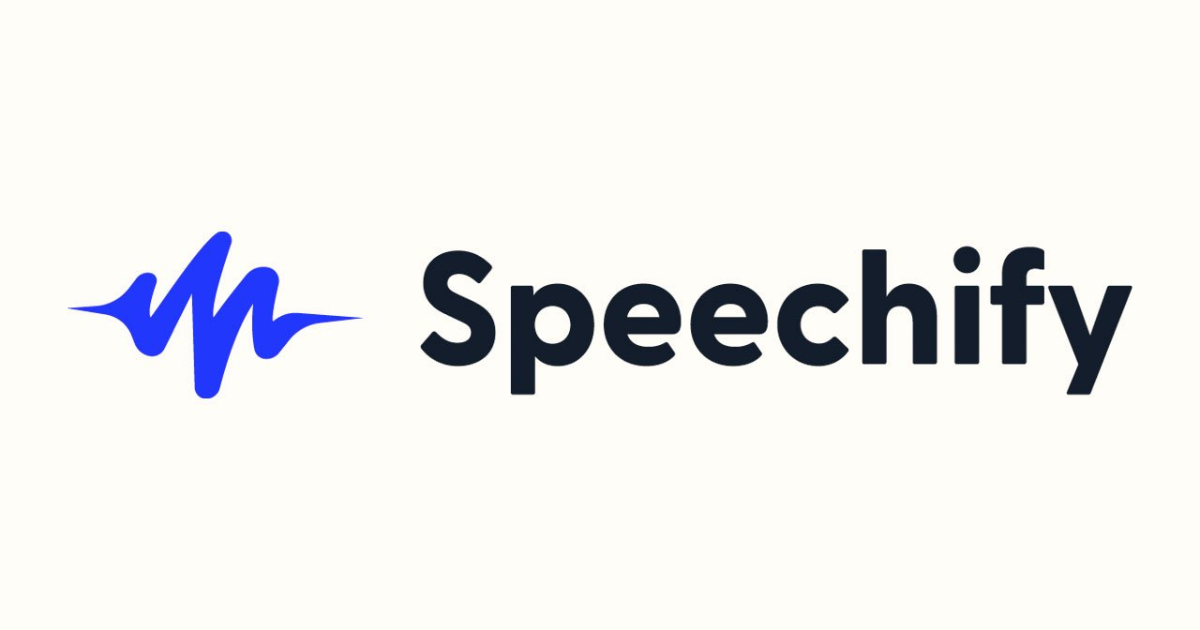Unlocking the Secrets of Lifelike TTS Voices with Speechify in 2024

The Future Is Now: Speechify and the Rise of AI in Text-to-Speech Technology
In the dynamic realm of digital technologies, AI-driven text-to-speech stands at the forefront, invoking a significant shift in how we consume written content. Speechify, a leading TTS platform, has reimagined this space in 2024 by harnessing the prowess of AI to fabricate voices that are not just heard but felt. Users across the spectrum, from avid readers to diligent professionals, are experiencing a halved reading time while embracing the intimacy of a narrated text, reminiscent of human touch. Infused with unique characteristics, these AI voices offer an auditory presence that turns the routine action of reading into an enthralling dialogue with machines.
With over 25 million users entrusting Speechify to animate the written word, the platform's array of voices, including those of cultural icons like Gwyneth Paltrow and Snoop Dogg, serves as a testament to the quality and relatability of its TTS offerings. This broad appeal is not an accident but the fruits of deep learning and nuanced acoustic engineering designed to produce lifelike and engaging audio that transcends the ordinary TTS experience. As Speechify continues to refine its synthesis API, the bar for 'lifelike' is perpetually raised, prompting questions about the future of AI in TTS—a future that, it seems, has already unfolded.
| Topics | Discussions |
|---|---|
| Speechify's AI Voices: Redefining Reading for Millions | Unpack how Speechify leverages celebrity voices and AI to deliver personalized reading experiences across demographics. |
| Text to Speech 2024: Revolutionizing Audio with AI Voices | Analyze the transformative effects of Speechify's TTS technology in streamlining educational and professional workflows. |
| AI-Driven TTS Advancements: The Speechify Revolution | Explore the cutting-edge developments in TTS that Speechify is pioneering to empower users with rapid, natural-sounding audio. |
| Unleashing Potential: Unreal Speech API Quickstarts | Get hands-on with the Unreal Speech API's quickstart guides, specifically designed for developers to integrate TTS into their projects with ease. |
| Optimizing User Experience: Best Practices in TTS Applications | Delve into the technical ingenuity behind crafting TTS voices indistinguishable from human speech. |
| Common Questions Re: TTS Voice Realism | Address the overarching inquiries surrounding TTS realism, revealing how Speechify's AI voices mark a new era of auditory digital interaction. |
Speechify's AI Voices: Redefining Reading for Millions
As we immerse ourselves in the innovative landscape of Speechify's TTS technology, it becomes essential to acquaint ourselves with several key terms that embody the cutting-edge advancements of the system. This glossary will serve as a beacon for understanding the core elements that make Speechify's AI voices not only transformative for the textual content but also for the auditory experiences they engender.
TTS (Text-to-Speech): A technology that converts written text into audible speech.
AI (Artificial Intelligence): The simulation of human intelligence processes by machines, especially computer systems.
Deep Learning: A type of machine learning that uses algorithms inspired by the structure and function of the brain's neural networks.
Neural TTS: TTS that uses deep neural networks to generate speech that is closer to natural human speech.
Prosody: The patterns of stress and intonation in a language.
Speechify API: A programmable interface offered by Speechify to incorporate its TTS technology into various applications.
Latency: The delay before a transfer of data begins following an instruction for its transfer.
SE-Optimized (Search Engine Optimized): The process of optimizing content to increase its potential to rank higher in search engine results and attract organic traffic.
Acoustic Engineering: The application of acoustics to design systems and environments for optimal sound quality.

Text to Speech 2024: Revolutionizing Audio with AI Voices
Speechify's rise in the TTS landscape is marked not just by its impressive user base, which speaks volumes about its performance and reliability, but also by its innovative integration of AI voices. The platform's commitment to reducing reading time significantly is central to its design, catering to a fast-paced world where efficiency is paramount. With voices that are shaped by popular figures, it becomes clear that Speechify is poised to offer a personalized experience that reflects the listener's preferences, a move that sees AI and celebrity culture intersecting.
The inclusion of globally recognized voices like those of Gwyneth Paltrow and Snoop Dogg offers users an engaging and familiar auditory interface to interact with written content. This strategic choice not only boosts relatability but also ensures that the brand retains a competitive edge. Further diversity in VoiceId options suggests that Speechify may be employing advanced neural network techniques to deliver a range of lifelike and relatable TTS outputs. The 'try for free' option is indicative of the platform's confidence in its product and its user-centric approach, aimed at fostering accessibility and openness.
While details regarding the specific AI algorithms and deep learning methods remain undisclosed, the implications of such tailored voices are profound. They suggest a nuanced approach to addressing common challenges of prosody and intonation that are typically observed in TTS systems. However, despite the absence of granular technical insights or specifics about the authors, co-authors, their affiliations, or sponsors behind the innovations driving Speechify, it is evident that the platform's technology is at the forefront of the TTS revolution as of the article's date of publication in 2024.
From Text to Audio: Speechify's Impact on Efficiency
Speechify has made a prominent impact on the realm of TTS by making written content more accessible and efficient. The influence of Speechify's TTS capabilities translates into tangible benefits for users who wish to consume textual information through audio, offering them a way to assimilate knowledge without dedicating time to traditional reading. This section will cover how Speechify's AI voices contribute to this efficiency.
The Voice Portfolio: Addressing User Preferences in TTS
Understanding the varied preferences of users, Speechify has meticulously curated a portfolio of voices—ranging from celebrity likenesses to original creations. This section will dissect how Speechify's range of VoiceIds addresses user demand for customization in TTS applications and explores the potential technological underpinnings that facilitate such a vast array of voice options.
AI-Driven TTS Advancements: The Speechify Revolution
The propulsion of TTS technology into new frontiers is emblematic of Speechify's commitment to using AI for enhancing audio experiences. At the core of this revolution is the intricate use of neural networks, designed to understand and emulate nuances of human speech. With each iteration of Speechify’s technology, the AI becomes more adept at replicating the subtleties of voice, including tone, pitch, and emotional inflections, that contribute to the perceived naturalness of its output.
Beyond mere reproduction of sound, these AI systems are beginning to integrate contextual understanding, thereby enriching the listening experience with appropriate expressiveness. This aspect of TTS development is crucial as it transcends the technical realm and resonates on a personal level with users. Speechify’s sophisticated algorithms are likely iterating through large datasets, learning from patterns in human speech to improve both the clarity and authenticity of the synthesized voice.
While specifics on the models and learning frameworks remain undisclosed, the observable outcomes of Speechify's AI advancements reveal a significant reduction in the 'uncanny valley' of synthetic voices. The growing trust and reliance on Speechify by millions reflect a society that is increasingly embracing AI as a complement to the human experience. Speechify's success story is not isolated; it sets a precedent for what AI can achieve in the domain of human-computer interaction.
Unleashing Potential: Unreal Speech API Quickstarts
Python Integration: Streamlining Your TTS Projects
For developers looking to streamline their TTS projects with Python, the Unreal Speech API presents a straightforward way to integrate advanced text-to-speech capabilities. The API's /stream endpoint offers a rapid and synchronous response, streaming back raw audio data for texts of up to 1,000 characters. Below is an example of how to leverage the requests library in Python to interact with the Unreal Speech API:
import requests
response = requests.post(
'https://api.v6.unrealspeech.com/synthesisTasks',
headers = {
'Authorization' : 'Bearer YOUR_API_KEY'
},
json = {
'Text': '''<YOUR_TEXT>''', # Up to 500,000 characters
'VoiceId': '<VOICE_ID>', # Scarlett, Dan, Liv, Will, Amy
'Bitrate': '192k', # 320k, 256k, 192k, ...
'Speed': '0', # -1.0 to 1.0
'Pitch': '1', # 0.5 to 1.5
'TimestampType': 'sentence', # word or sentence
#'CallbackUrl': '<URL>', # pinged when ready
}
)
Node.js and React Native: Cross-Platform Voice Solutions
Developing TTS applications for multiple platforms is made simple with Node.js and React Native using the Unreal Speech API. The /stream endpoint’s compatibility with JavaScript allows developers to implement TTS functionality effectively. Here's a Node.js example using the axios library to send a POST request to Unreal Speech API:
const axios = require('axios');
const headers = {
'Authorization': 'Bearer YOUR_API_KEY',
};
const data = {
'Text': '<YOUR_TEXT>', // Up to 500,000 characters
'VoiceId': '<VOICE_ID>', // Scarlett, Dan, Liv, Will, Amy
'Bitrate': '192k', // 320k, 256k, 192k, ...
'Speed': '0', // -1.0 to 1.0
'Pitch': '1', // 0.5 to 1.5
'TimestampType': 'sentence', // word or sentence
//'CallbackUrl': '<URL>', // pinged when ready
};
axios({
method: 'post',
url: 'https://api.v6.unrealspeech.com/synthesisTasks',
headers: headers,
data: data,
}).then(function (response) {
console.log(JSON.stringify(response.data));
});Optimizing User Experience: Best Practices in TTS Applications
Unreal Speech is revolutionizing the text-to-speech (TTS) industry with their innovative API, promising remarkable cost savings of up to 90% compared to competitors. Offering prices up to 10 times cheaper than Eleven Labs and Play.ht, and up to twice as economical as major providers like Amazon, Microsoft, and Google, Unreal Speech stands out as a cost-effective solution for TTS needs. With a commitment to affordability without compromising quality, the platform encourages widespread adoption by allowing users to start free and benefit from volume discounts as usage increases.
The platform's Enterprise Plan underlines its scalability, offering an impressive 625 million characters per month, translating to an approximate 14,000 hours of audio for $4999 monthly, with additional usage billed at $8 per 1 million characters. This pricing model is particularly beneficial for high-volume users such as academic researchers who require extensive data for linguistic studies, software engineers developing interactive applications, and educators creating immersive learning materials for students. Recognized for their cost-effectiveness, Unreal Speech has earned testimonials like that from Derek Pankaew, CEO of Listening.com, who acknowledges significant cost reductions and a superior listening experience.
Unreal Speech's advantages extend beyond just economics, with a focus on performance delivering low latency response times and impressive uptime, ensuring reliable and efficient service for real-time applications. This robust performance makes the platform ideal for various sectors such as game development, where synchronized audio can greatly enhance the user experience. Additionally, Unreal Speech's approach to TTS quality, with easy code sample integrations in multiple languages such as Python and Node.js, demonstrates their dedication to accessibility and user convenience across different disciplines.
Common Questions Re: TTS Voice Realism
Discovering the Pinnacle of Realistic Text-to-Speech Voices
Exploring the most advanced TTS voices that challenge the distinction between synthetic and human speech.
The Quest for Authentic Human-Like TTS Explained
Dive into the depth of TTS technology and discover how lifelike intonation and prosody are achieved.
Crafting Realism in Text-to-Speech: The How-To Guide
A hands-on approach to transforming text into speech that rivals the natural human voice in authenticity.